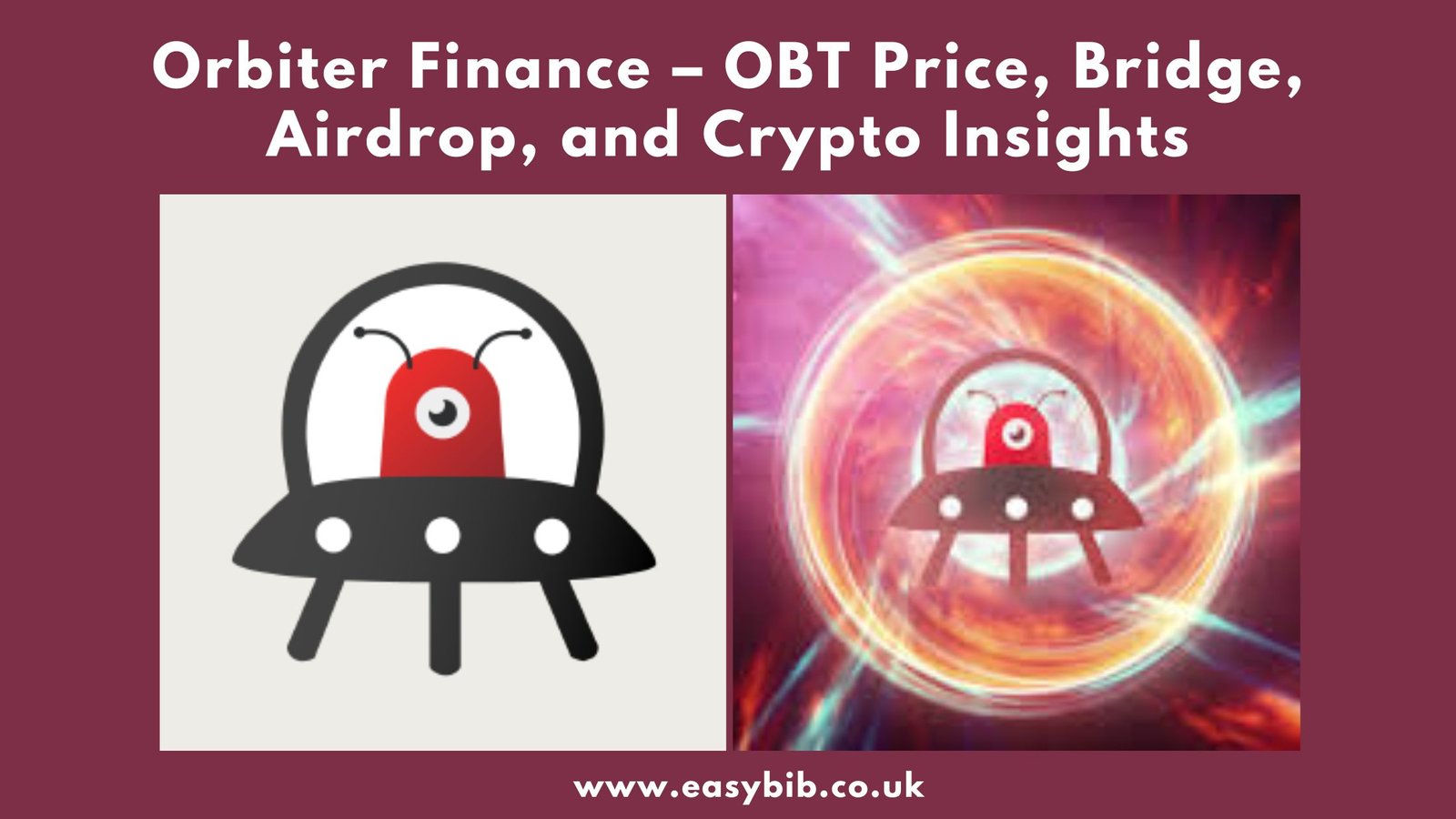Orbiter Finance – OBT Price, Bridge, Airdrop, and Crypto Insights

Orbiter Finance is a decentralized bridge that connects multiple blockchain networks. It focuses on enabling seamless asset transfers between Ethereum, Layer-2 solutions, and other supported chains. The protocol is designed with security, speed, and cost efficiency in mind. It uses advanced cryptographic methods to verify transactions without relying on a centralized authority. This approach helps users move their assets freely across networks without unnecessary delays or risks.
The system supports a wide range of chains. These include Ethereum, zkSync Era, Arbitrum, Base, Optimism, Polygon, Solana, TON, Tron, Scroll, and BNB Chain. This extensive network coverage allows users to transfer funds between different ecosystems without relying on centralized exchanges. By reducing the complexity of cross-chain transfers, Orbiter Finance offers a practical solution for individuals and projects that operate on multiple networks.
Its core mission is to make blockchain interoperability smooth and accessible. In the current environment, liquidity is often trapped within isolated chains. Orbiter aims to break down these barriers. This helps to create a more connected and efficient blockchain economy.
How Orbiter Works
Orbiter operates using a Maker-Sender model. In this setup, a Sender is the user who initiates the transfer. The Maker is a liquidity provider who facilitates the movement of assets from one chain to another. The process begins when the Sender sends funds on the source chain. The Maker receives them and then sends the equivalent value, minus fees, to the Sender’s address on the target chain.
This method is efficient because it avoids locking funds into complex smart contracts for extended periods. Instead, transactions are completed through wallet-to-wallet transfers. This reduces the cost of gas fees and shortens the time needed for completion. Many transactions finish in under 20 seconds.
Each transfer includes a short code. This code tells the system where the funds should be sent on the destination chain. If the code is wrong or missing, the transaction will not complete. This extra step ensures accuracy and prevents funds from being sent to the wrong place.
The security framework includes several smart contract layers. A Maker Deposit Contract holds collateral from liquidity providers to guarantee that funds are available. An Event Binding Contract confirms that the transaction occurred on the source chain. A verification process ensures that transactions are valid before funds are released on the target chain. This system combines speed with safety, making it reliable for cross-chain transfers.
Growth and Performance
Orbiter Finance has grown significantly since its launch. It has processed tens of millions of transactions with a total value in the tens of billions of dollars. Millions of unique users have interacted with the platform. The number of supported chains has also expanded steadily.
This growth reflects the increasing demand for efficient cross-chain solutions. As more Layer-2 networks and alternative chains emerge, the need for reliable bridging services grows. Orbiter’s ability to adapt and integrate new networks gives it a strong position in the market.
Revenue is generated through transaction fees. These fees are typically lower than those charged by other bridging services. A prepaid gas model is used to ensure transactions complete quickly without requiring users to manage gas fees on the target chain. This approach makes the process smoother and more predictable for users.
The project has also secured investment from established blockchain venture firms. This funding supports development, marketing, and expansion into new markets.
READ MORE
The OBT Token

The native token of Orbiter Finance is called OBT. It was launched in January 2025. The token serves several purposes within the ecosystem. It allows holders to participate in governance, giving them a voice in decisions about future developments and protocol changes. It is also used for staking, which lets users earn rewards for locking their tokens into the network.
OBT helps incentivize active participation in the platform. Rewards can be given to liquidity providers, early adopters, and community members who contribute to the ecosystem. This helps to create a sustainable and engaged user base.
The token is available on multiple exchanges. It can be traded against popular cryptocurrencies like USDT. By maintaining a presence on several platforms, Orbiter ensures that OBT remains accessible to users around the world.
OBT Price and Market Data
As of mid-August 2025, the price of OBT is in the range of half a cent to just under a cent. The token’s market capitalization is in the tens of millions of dollars. Its trading volume over a 24-hour period often reaches several million dollars.
The circulating supply is over four billion tokens, while the maximum supply is ten billion. The token reached its all-time high of just over three cents in March 2025, but the price has since declined. Like many cryptocurrencies, OBT experiences fluctuations based on market conditions, investor sentiment, and overall demand for the platform’s services.
Price predictions vary. Some forecasts suggest moderate growth over the coming years as the platform expands. However, as with all digital assets, market performance is subject to change and depends on adoption and usage trends.
The Orbiter Airdrop
Orbiter launched its token alongside an airdrop campaign. The airdrop was designed to reward early supporters and active users of the platform. Eligibility was determined based on user activity over a set period. Factors included the length of time using the platform, the number of transactions completed, and participation in community programs.
Certain non-fungible tokens (NFTs) issued by Orbiter were also linked to eligibility. For example, holders of specific pilot-themed NFTs had an advantage in qualifying for the airdrop. Participants could check their eligibility through an online tool and claim their tokens directly to their wallets.
The airdrop was structured in multiple phases. This approach ensured that users had several opportunities to claim their rewards. It also allowed the team to manage the distribution in a controlled way, reducing the risk of market volatility caused by a sudden influx of tokens.
Quests and User Engagement
To encourage continued use of the platform, Orbiter introduced a quest system. Quests are tasks that users can complete to earn points or qualify for rewards. These tasks often involve performing transfers between specific chains or using new features introduced on the platform.
The quest system serves multiple purposes. It keeps the community engaged, encourages exploration of different supported networks, and helps the team test new features under real-world conditions. It also provides an ongoing incentive for users to remain active on the platform, which supports transaction volume and liquidity.
Points earned through quests can sometimes be used to qualify for future rewards or airdrops. This gamified approach to participation helps build a loyal user base and adds an element of fun to the process.
READ MORE
Conclusion
Orbiter Finance has positioned itself as a leading cross-rollup bridge. Its focus on speed, security, and cost efficiency sets it apart in a crowded market. The Maker-Sender model, combined with robust verification and collateral systems, offers a reliable way to move assets between blockchains.
The launch of the OBT token and accompanying airdrop helped establish a strong community. The quest system and governance features give users reasons to stay engaged. As the platform continues to expand its network coverage and feature set, it has the potential to become a central part of the cross-chain infrastructure that supports the next phase of blockchain growth.
